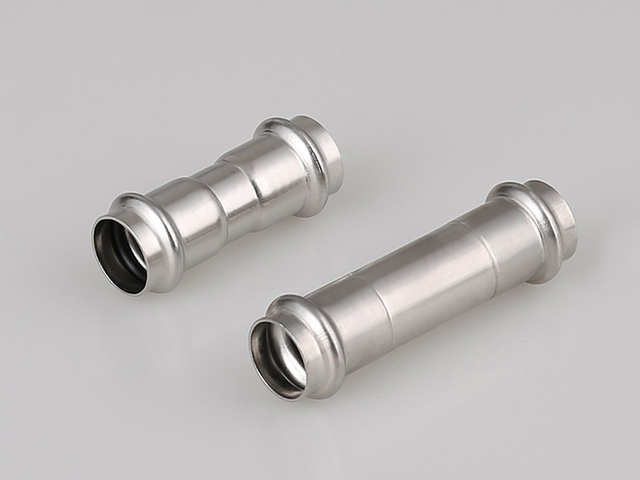What is the difference between stainless steel compression fittings and carbon steel materials?
Time:
2022-04-25 13:34
As is well known, ordinary steel is widely used in various fields such as bridges, railways, construction, processing equipment, machinery, and automobiles. The steel used in daily life has corresponding mechanical properties and corrosion resistance. Do you know about carbon steel and stainless steel compression fittings? What are the differences between them?
As the name suggests, carbon steel is an alloy of elements such as iron and carbon, which contains different compositions. The higher the carbon content of carbon steel, the harder and more brittle it becomes; The lower the value, the stronger the toughness. Therefore, it can be said that the difference between carbon steel and stainless steel compression fittings lies in their combination.
1、 Mechanical properties
The content of alloying elements determines the mechanical properties of steel, such as hardness, tensile strength, brittleness, and ductility. For example, the nickel trapped in stainless steel pipes makes them more ductile and sturdy. Their composition plays an important role in mechanical properties, as these alloying elements are the main characteristics that determine the lattice structure of steel.
2、 Visually
Stainless steel is not easily tarnished, so it looks better than carbon steel. Therefore, in order to maintain the appearance of the product, carbon steel should be painted frequently to avoid corrosion.
3、 Price cost
If costs are not compared, engineering product comparisons will not be completed. Carbon steel alloys are more economical than compressed stainless steel pipes because they do not contain expensive elements. The cost of stainless steel completely depends on other alloy materials, so overall, stainless steel pipe fittings are more expensive than carbon steel.
4、 Corrosion resistance
Carbon steel and stainless steel compression fittings can be polished to obtain a smooth surface. However, for carbon steel, the surface should be protected with appropriate coatings to prevent rusting, but for clamped stainless steel pipes, this is not necessary. This is because of the presence of chromium in stainless steel compression fittings, which provide oxide shielding and excellent corrosion resistance to most known chemicals.



